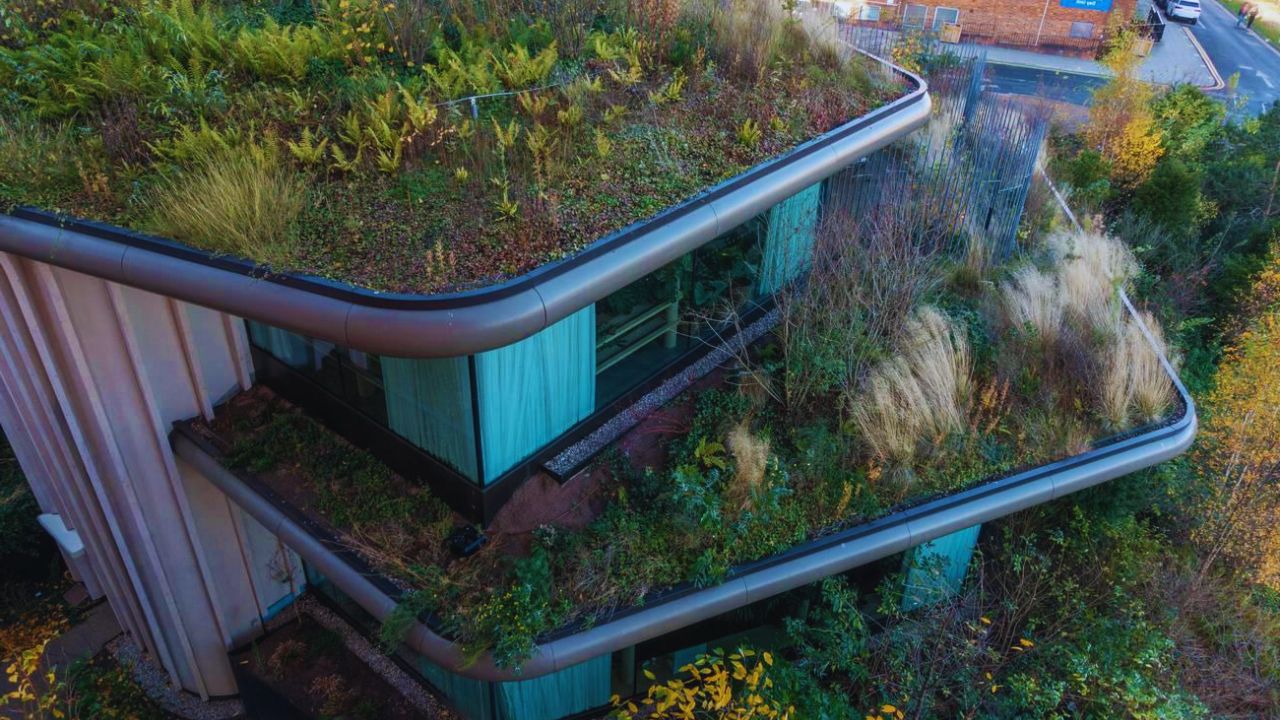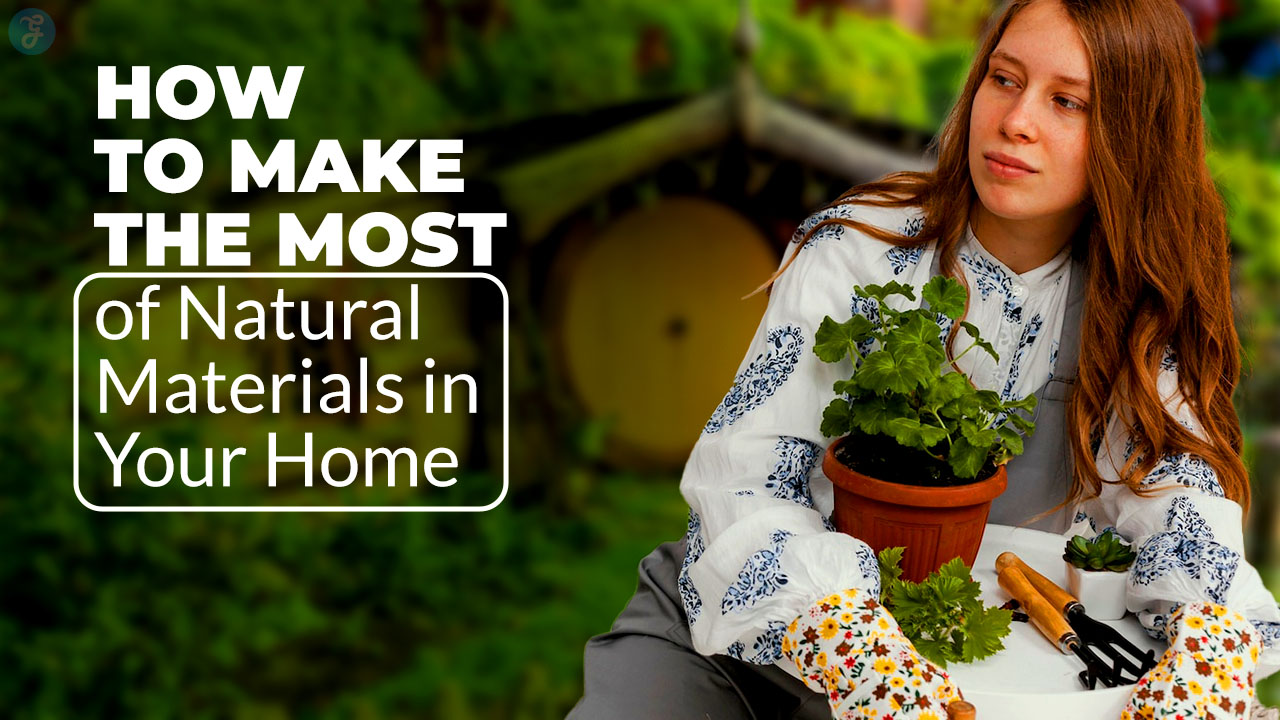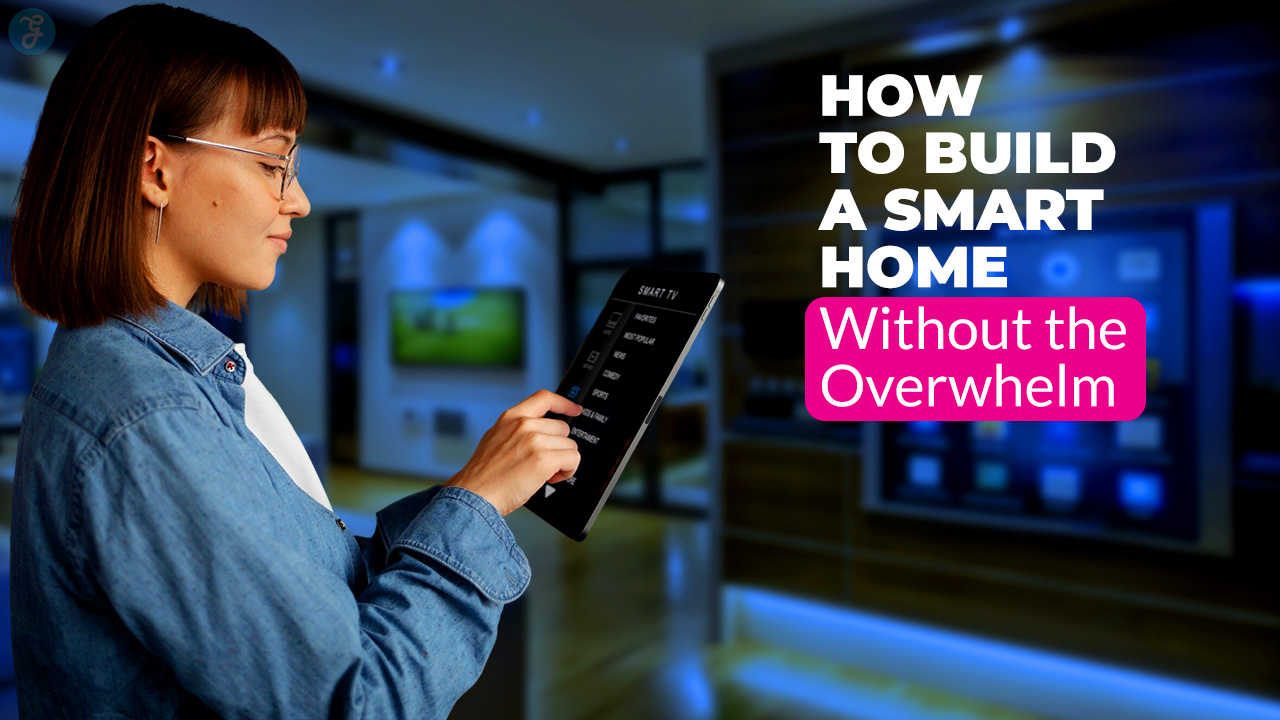In today’s world, where environmental concerns are at the forefront of global discussions, adopting eco-friendly practices has become essential. Going green is about making significant lifestyle changes and incorporating simple, everyday habits that collectively make a substantial impact.
As we move into 2024, embracing sustainable living to protect our planet for future generations is more important than ever. This guide, “40 Easy Ways to Go Green in 2024,” provides practical tips and actionable steps to reduce your carbon footprint and contribute to a healthier, more sustainable environment.
From home improvements and mindful consumption to sustainable travel and eco-friendly workplace practices, these suggestions will help you make a positive difference in every aspect of your life.
Home Improvements
1. Renewable Energy for Electricity
Install solar photovoltaic (PV) panels to harness the sun’s energy, converting it into electricity for your home. This renewable energy source reduces reliance on fossil fuels and greenhouse gas emissions. Solar panels require minimal maintenance and have a long lifespan, providing sustainable energy for decades.
You can save on energy bills by generating electricity and even selling excess power back to the grid. Combining solar PV with renewable systems like wind turbines or hydroelectric systems can diversify your energy supply further.
Additionally, installing solar battery storage allows you to store excess energy during power outages or at night. Many governments offer incentives and grants to reduce the initial installation cost of solar panels, making this a financially viable option for many households.
Switching to renewable energy is a significant step towards a more sustainable and eco-friendly lifestyle.
2. Smart Thermostats
Smart thermostats are a modern solution for improving home energy efficiency. These devices connect to your heating and cooling systems, allowing you to control the temperature remotely via a smartphone app.
Smart thermostats learn your daily routines and adjust settings automatically, ensuring optimal comfort while minimizing energy use. They can also detect when you’re away from home and reduce heating or cooling accordingly, saving energy and reducing utility bills.
Using presence-sensing technology, smart thermostats ensure your home is always at the right temperature when you return. This intelligent system can significantly reduce energy demand from fossil-fuel power plants.
Studies have shown that homes with smart thermostats use up to 16.5% less energy than those without. Installing a smart thermostat is a simple yet effective way to make your home more eco-friendly and reduce your carbon footprint.
3. Energy-Efficient Lighting
Switching to energy-efficient lighting is one of the easiest ways to reduce environmental impact. LED light bulbs use up to 90% less energy than traditional incandescent bulbs and last much longer, reducing the need for frequent replacements.
These bulbs convert most of their energy into light rather than heat, making them more efficient and safer. Compact fluorescent lamps (CFLs) are another energy-saving option, offering benefits similar to those of LEDs.
Both bulbs are available in various colors and styles, allowing you to choose the proper lighting for your home. Using energy-efficient lighting can significantly lower your electricity bills and reduce your household’s carbon emissions.
According to the Energy Saving Trust, switching to LED bulbs can cut carbon emissions by up to 40kg per year. This simple change can significantly impact your overall energy consumption and environmental footprint.
4. Upgrade to Energy-Efficient Appliances
Modern energy-efficient appliances are designed to use less electricity and water without compromising performance. When it’s time to replace your washing machine, refrigerator, dishwasher, or oven, look for models with high energy efficiency ratings.
These appliances are typically labeled with energy ratings, ranging from A (most efficient) to G (least efficient). Choosing appliances with an A rating can help you save money on utility bills and reduce your household’s carbon footprint.
In addition to being energy-efficient, many modern appliances offer advanced features like intelligent controls and improved performance. The UK government now requires manufacturers to provide spare parts for appliances, making repairing and extending their lifespan easier.
Upgrading to energy-efficient appliances can reduce the 1.5 million tonnes of electrical waste produced annually in the UK. This investment not only benefits the environment but also enhances the efficiency and functionality of your home.
5. Use Eco-Cleaning Products
Traditional cleaning products often contain harmful chemicals that pollute waterways and harm wildlife. Switching to eco-friendly cleaning products reduces the release of these toxic substances into the environment.
Look for products made from natural, biodegradable ingredients, free from synthetic fragrances and preservatives. Eco-friendly cleaning products are effective and safer for your family and pets.
You can also make your natural cleaners using simple ingredients like vinegar, lemon juice, and bicarbonate of soda. These homemade solutions are cost-effective and reduce packaging waste.
Choosing eco-friendly cleaning products minimizes exposure to harmful chemicals and promotes a healthier environment. Supporting companies prioritizing sustainability and transparency in their manufacturing processes promotes eco-conscious consumerism.
6. Biodegradable Household Products
Using biodegradable household products helps reduce the environmental impact of waste. These products are made from natural materials that break down more quickly in the environment, preventing pollution. Examples include recycled toilet paper, natural ingredient shampoos, bamboo toothbrushes, and washcloths made from hemp or agave fibers.
Biodegradable products decompose naturally, reducing the amount of waste in landfills. This practice also supports sustainable industries and reduces the demand for synthetic materials.
By choosing biodegradable products, you help protect ecosystems and promote a circular economy where materials are reused and recycled. This small change can significantly impact the environment, contributing to a more sustainable lifestyle.
7. Double or Triple Glazed Windows
Upgrading double or triple-glazed windows improves your home’s insulation and energy efficiency. These windows consist of multiple glass panes separated by a gap filled with air or gas (usually argon), which acts as an insulating barrier.
This design prevents heat loss during winter and keeps your home cooler in summer. Low-emissivity (Low-E) glass enhances insulation by reflecting heat into the room. Double and triple-glazed windows also reduce noise pollution, making your home quieter.
Improved insulation reduces the need for heating and cooling, lowering your energy bills and carbon emissions. This investment enhances comfort and increases your home’s value and sustainability.
8. Cavity Wall Insulation
Cavity wall insulation involves filling the gap between your home’s inner and outer walls with insulating material. This prevents heat from escaping, making your home more energy-efficient.
Insulation materials include mineral wool, foam, and polystyrene beads. Properly insulated cavity walls can reduce heat loss by up to 35%, lowering your heating bills and carbon footprint. This improvement is especially beneficial for older homes with uninsulated cavity walls.
In addition to energy savings, cavity wall insulation can improve your home’s comfort and reduce condensation issues. This relatively simple and cost-effective upgrade contributes significantly to a more sustainable home.
9. Loft Insulation
Up to 25% of a home’s heat can be lost through an uninsulated roof. Installing loft insulation is a simple and effective way to reduce this heat loss.
Insulation materials, such as mineral wool or foam, are laid between the joists in your loft to create a thermal barrier. This helps retain heat during winter and keep your home cooler in summer. Loft insulation is a cost-effective way to improve energy efficiency and reduce heating bills.
Maintaining consistent indoor temperatures also contributes to a more comfortable living environment. Insulating your loft reduces your carbon footprint and supports a more sustainable home.
10. Filling Gaps Between Your Floorboards
Gaps between floorboards can cause significant heat loss and drafts, reducing your home’s energy efficiency. Filling these gaps with resin, acrylic filler, or wood strips can prevent drafts and improve insulation.
This simple DIY project can enhance your home’s comfort and reduce heating bills. Properly sealed floorboards also prevent moisture buildup, which can lead to mold and structural damage.
Addressing gaps in your flooring contributes to a more energy-efficient and sustainable home. This small change can greatly impactmpact on your overall energy consumption and comfort.
11. Radiator Foil
Radiator foil is a cost-effective way to improve your home’s heating efficiency. This thin reflective sheet is placed behind radiators to reflect heat into the room, reducing heat loss through external walls.
Radiator foil is easy to install and can significantly improve the effectiveness of your heating system. Maximizing the heat output of your radiators can reduce your energy consumption and lower heating bills.
This simple upgrade enhances your home’s comfort and contributes to a more sustainable lifestyle. Radiator foil is an affordable and effective solution for improving energy efficiency in older homes.
12. Draught Excluders
Draught excluders are an easy and affordable way to prevent heat loss through gaps around doors and windows. These strips, made from foam, metal, or plastic, create a seal that blocks drafts and retains heat.
Draught excluders can be used on doors, windows, letterboxes, and keyholes. This simple installation improves your home’s insulation, reducing heating costs and enhancing comfort.
By preventing drafts, you create a more energy-efficient and sustainable living environment. Draught excluders are a practical solution for improving your home’s energy efficiency with minimal effort and expense.
13. Window Seal Replacement
Over time, window seals can deteriorate due to temperature changes and wear, leading to drafts and heat loss. Replacing window seals every 5-10 years ensures an airtight grip, preventing drafts and improving insulation.
Properly sealed windows reduce energy consumption and enhance your home’s comfort. This maintenance task also prevents moisture buildup, which can cause mold and damage around windows.
Regularly replacing window seals maintains energy efficiency and contributes to a more sustainable home. This small but essential step can significantly impact your overall energy savings.
14. Upgrade Your Boiler
Modern boilers are designed to be highly energy-efficient, using condensing technology to recover heat that would otherwise be lost. Upgrading to a modern boiler can reduce your energy consumption by 25% compared to older models.
Condensing boilers have high-efficiency ratings (A), providing reliable and cost-effective heating. Hydrogen boilers are an emerging technology that burns hydrogen instead of natural gas, producing water as the only by-product.
Biomass boilers use renewable biological materials for combustion, offering a sustainable alternative to traditional fuels. Upgrading your boiler is a significant investment in energy efficiency and sustainability.
15. Have Your Boiler Serviced
Regular boiler servicing is essential for maintaining efficiency and safety. An annual service ensures your boiler operates optimally, reducing fuel consumption and emissions. A licensed engineer can identify and fix any issues, extending the lifespan of your boiler.
Efficient operation means lower heating bills and a reduced carbon footprint. Regular maintenance also prevents breakdowns and costly repairs.
Keeping your boiler in good condition contributes to a more sustainable and energy-efficient home. Regular servicing is a small investment that can yield significant energy savings and reliability benefits.
16. Heat Pumps
Heat pumps are a sustainable alternative to traditional heating and cooling systems. They extract heat from the air, ground, or water and transfer it into your home for heating or cooling. Heat pumps are highly efficient, generating up to 4kW of thermal energy for every 1kW of electricity used.
This results in a 200-600% efficiency rate, significantly reducing carbon emissions. Heat pumps eliminate the need for gas pipes and oil tanks, providing a cleaner and greener heating solution.
The UK Government Boiler Upgrade Scheme offers financial incentives to offset installation costs, making heat pumps a viable option for many households.
17. Solar Thermal
Solar thermal systems use the sun’s energy to heat water for domestic use or space heating. These systems can be integrated with your existing heating system, reducing reliance on fossil fuels and lowering energy bills.
High-temperature collector solar thermal systems can also generate electricity. Solar thermal systems are environmentally friendly, reducing carbon emissions and saving on energy costs.
Harnessing renewable energy contributes to a more sustainable and eco-friendly home. This technology offers a reliable and efficient way to utilize the sun’s energy throughout the year.
How We Get Around?
18. Electric Cars
Electric vehicles (EVs) are a sustainable alternative to petrol and diesel cars, producing zero emissions during operation. EVs reduce air pollution and greenhouse gas emissions, contributing to cleaner air and a healthier environment.
They are also cheaper to run, with lower fuel and maintenance costs than traditional vehicles. Many governments offer incentives and grants to encourage the adoption of electric cars.
Charging infrastructure is expanding, making charging EVs at home or on the go easier. By choosing an electric car, you contribute to reducing the environmental impact of transportation.
What We Wear?
19. Wash Your Clothes Less
Frequent washing of synthetic clothes releases microplastics into the environment, polluting oceans and harming marine life. Washing clothes less often and at lower temperatures reduces the release of microplastics and saves water and energy.
Using non-toxic detergents and avoiding tumble dryers further minimizes environmental impact. This practice also extends the lifespan of your clothes, reducing the need for frequent replacements. You contribute to a more sustainable and eco-friendly lifestyle by washing clothes less.
20. Don’t Throw Wearable Clothes Away
The fashion industry generates significant textile waste, with many clothes in landfills. Instead of discarding wearable clothes, consider repairing, altering, or donating them.
Second-hand and vintage stores offer sustainable alternatives to fast fashion. Choosing high-quality, durable clothing reduces the environmental impact of production and consumption.
Supporting sustainable brands that prioritize ethical practices and transparency helps promote a more responsible fashion industry. By extending the life of your clothes, you reduce waste and contribute to a circular economy.
What We Eat?
21. Eat Less Meat
Meat production significantly contributes to greenhouse gas emissions, deforestation, and water usage. Reducing meat consumption can dramatically lower your carbon footprint and environmental impact.
Plant-based diets are more sustainable and can provide all the necessary nutrients for a healthy lifestyle. You don’t have to go completely vegetarian or vegan; even reducing meat intake by a few meals a week can make a difference.
Supporting local and organic farmers ensures your food is produced sustainably and ethically. Eating less meat contributes to a healthier planet and a more sustainable food system.
22. Shop for Local Produce
Buying local produce reduces the carbon footprint of transporting food over long distances. Local food is often fresher, more nutritious, and supports local farmers and economies.
Seasonal produce is grown naturally, reducing the need for artificial inputs like pesticides and fertilizers. Shopping at farmers’ markets or joining a community-supported agriculture (CSA) program connects you with local growers and promotes sustainable agriculture.
By choosing local produce, you reduce your environmental impact and support a more resilient food system.
23. Limit Food Waste
Food waste contributes to greenhouse gas emissions and wasted resources. Planning meals, buying only what you need, and using leftovers can help reduce food waste.
Composting organic waste turns it into valuable soil nutrients for gardening. Proper storage and preservation techniques can extend the shelf life of perishable foods. By reducing food waste, you conserve resources and minimize your environmental impact.
How We Travel?
24. Limit Plane Travel
Air travel is a significant source of carbon emissions. Limiting plane travel and choosing alternative modes of transportation, such as trains or buses, can reduce your carbon footprint.
When flying is necessary, consider offsetting your emissions by supporting carbon offset projects. Traveling less frequently and staying longer at your destination can minimize environmental impact. By limiting plane travel, you contribute to reducing global greenhouse gas emissions.
25. Avoid Cruise Holidays
Cruise ships are notorious for their high emissions and environmental impact. They produce significant air and water pollution, contributing to climate change and marine degradation.
Choosing alternative vacation options, such as eco-tourism or land-based travel, can reduce your environmental footprint. Supporting sustainable tourism practices helps protect natural and cultural heritage sites. Avoiding cruise holidays contributes to a healthier planet and promotes responsible travel.
26. Practice Sustainable Tourism
Sustainable tourism involves making travel choices that minimize environmental impact and support local communities. Choose eco-friendly accommodations, reduce energy use, and avoid single-use plastics.
Support local businesses, respect local cultures, and protect natural habitats. Traveling off-season and visiting less tourist-heavy destinations can help prevent over-tourism. By practicing sustainable tourism, you contribute to preserving the environment and promoting ethical travel.
At Work
27. Green Workplaces
Creating a green workplace involves implementing eco-friendly practices in the office. Encourage recycling, reduce paper usage, and promote energy-efficient lighting and appliances.
Support employees in using public transportation, carpooling, or biking to work. Implementing these practices can reduce your workplace’s environmental impact and promote a sustainability culture.
28. Conscious Use of Paper and Stationery
Minimize paper usage by going digital whenever possible. Use electronic documents and emails instead of printing.
When printing is necessary, choose recycled paper and print on both sides. By reducing paper consumption, you conserve resources and decrease the environmental impact of paper production.
29. Embracing Sustainable Brands
Support brands that prioritize sustainability and ethical practices. Choose products made from renewable materials and with minimal packaging. By supporting sustainable brands, you promote responsible consumerism and contribute to a more eco-friendly economy.
30. Natural Air Fresheners
Traditional air fresheners often contain harmful chemicals affecting indoor air quality and health. Use natural alternatives like essential oils, potpourri, or homemade air fresheners. These options are safer for your health and the environment.
31. Eco-Friendly Parenting
Teach children about the importance of sustainability and environmental stewardship. Encourage outdoor activities, recycling, and water conservation. By raising eco-conscious children, you contribute to a more sustainable future.
32. Zero-Waste Lifestyle
Adopt a zero-waste lifestyle by reducing single-use plastics and choosing reusable products. Carry reusable bags, bottles, and containers. Minimizing waste reduces your environmental impact and promotes a more sustainable lifestyle.
33. Community Engagement
Get involved in local environmental initiatives and organizations. Participate in community clean-ups, tree-planting events, and educational programs. Engaging with your community can make a positive impact and promote sustainability.
34. Conserving Water Resources
Be mindful of your water usage by fixing leaks, using efficient appliances, and harvesting rainwater. Install low-flow showerheads and faucets, and water your plants during more excellent times of the day to minimize evaporation. Conserving water benefits the environment and ensures a sustainable water supply for future generations.
Eco-Friendly Travel
35. Eco-Tourism
Choose eco-friendly accommodations and engage in sustainable tourism practices. Respect local cultures and ecosystems and support initiatives that protect and preserve natural attractions. Eco-tourism offers unique and enriching experiences while promoting responsible travel.
36. Sustainable Technology
Choose energy-efficient electronics and appliances that have minimal impact on the environment. Dispose of old electronics responsibly through recycling programs to prevent electronic waste. Additionally, be mindful of your digital habits to minimize energy consumption.
37. Chemical-Free Gardening
Use organic gardening practices to avoid harmful pesticides and fertilizers. Organic gardening supports soil health and protects beneficial insects.
38. Carbon Footprint Reduction
Measure and track your carbon footprint to identify areas for improvement. Reduce energy consumption, promote renewable energy, and offset unavoidable emissions by supporting verified carbon offset projects. Taking action to reduce your carbon footprint empowers you to be a part of the solution to climate change.
39. Eco-Friendly Office Practices
Encourage paperless operations, implement recycling programs, and prioritize energy efficiency in your office. Opt for digital communication and use cloud storage to reduce paper waste. By creating a green office environment, you can inspire others and lead by example in sustainability.
40. Eco-Friendly Cleaning Products
Switch to environmentally friendly cleaning products that are free from harmful chemicals. Many commercial cleaning products contain toxins that can be carcinogenic and harmful to human health and the environment.
DIY cleaning products with natural ingredients like vinegar, baking soda, and essential oils clean effectively and promote a safer and healthier living space.
Various DIY cleaning resources are available on Yuvaap, where you can learn how to make some effective household cleaners using ingredients around your house.
Final thought
Going green doesn’t require drastic changes or sacrifices. Incorporating these 40 easy and practical tips into your daily routine can significantly reduce your environmental impact and contribute to a more sustainable future.
Each small action, from using energy-efficient appliances to choosing sustainable travel options, makes a big difference. As we navigate through 2024, let’s commit to making eco-friendly choices that benefit our planet and our health and well-being.
We can create a greener, cleaner, and more sustainable world for ourselves and future generations. Remember, every step towards sustainability is towards a better, healthier planet.







































